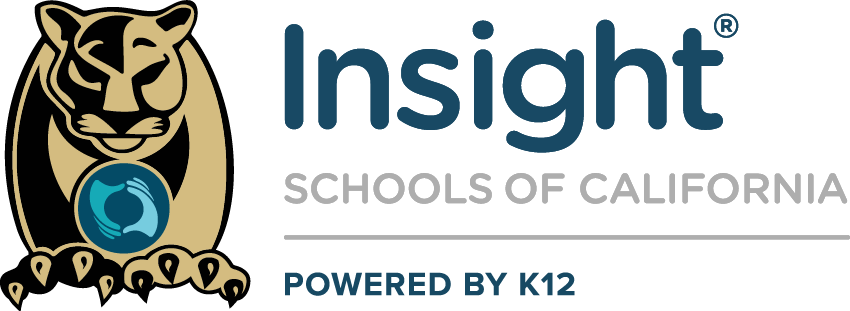How It Works
Curious how online learning works?
With online learning, your teen can learn at home, or wherever there’s an internet connection, while enjoying the benefits and support of a school program. They’ll complete a mix of online lessons and offline activities, using K12-provided books and materials.* State-credentialed teachers provide instruction in virtual sessions called “Class Connects.”
What to Expect
ISCA Programs
Insight Schools of California (ISCA) use quality curriculum from K12 that’s designed to let students find the learning style that works best for them, allowing them to find their own path to success. Each online classroom offers engaging and relevant lessons that build on your child’s interests and abilities.
What’s my role as a parent?
You’ll play an active and important role as your child’s Learning Coach. You’ll spend time each day to:
- Provide academic support, motivation, and guidance throughout the school year
- Ensure your child is on track with assignments and coursework
- Communicate with teachers
- Report daily attendance
If you or your child’s legal guardian are unable to fill this role, you can choose a family member, friend, or another trusted adult to be the Learning Coach.

More About the Online School (OLS)
This easy-to-use platform has the tools you’ll need to access school online. Parents and students use the OLS to:
- Create schedules using built-in planning tools
- Log attendance
- Monitor progress
- Access daily lessons
- Submit assignments
- Participate in live web classes and interactive discussions
- Connect with teachers and reach out for extra help whenever needed
- Join online clubs
- Participate in virtual field trips
- Stay up to date on school news and events
Frequently Asked Questions
Who is eligible to attend ISCA?
Any student in grades 9–12 who resides in one of these California counties is eligible for full-time enrollment:
- Alameda
- Amador
- Calaveras
- Contra Costa
- Imperial
- Inyo
- Kern
- Kings
- Los Angeles
- Orange
- Riverside
- Sacramento
- Santa Barbara
- San Bernardino
- Santa Clara
- San Diego
- San Joaquin
- San Luis Obispo
- Stanislaus
- Tulare
- Ventura
Students must also be 20 years of age or younger when they enroll. Students who turn 21 while enrolled and need additional education in order to receive a diploma may remain enrolled until they meet the graduation requirements or the end of the school year in which they turn 21, whichever occurs first. Enrolling students must also be able to demonstrate completion of the eighth grade through official transcript or homeschool portfolios.
What does it cost to attend ISCA?
ISCA is a public school program, so there is no tuition. We provide California-credentialed teachers and instructional materials. Eligible families receive a loaner computer and printer. Students and families will be responsible for providing some common household materials (such as printer ink and paper). Our enrollment consultants can help address your technological and computer questions and needs.
What is the attendance policy?
As California public school students, all ISCA students must comply with the state-required minimum number of instructional days.
Can our family take a vacation during the school year?
The school calendar includes school holidays or vacation time. Whenever possible, family vacations should align with school vacation days. Parents are encouraged to contact their student’s teacher if they plan a vacation that does not coordinate with the school calendar.
*Course materials vary by course and school.
 EN
EN ES
ES



